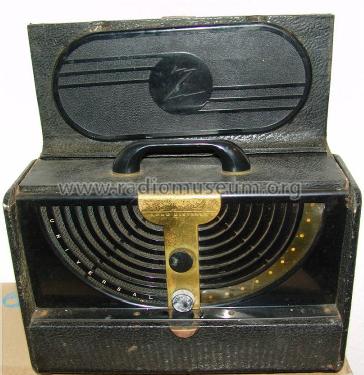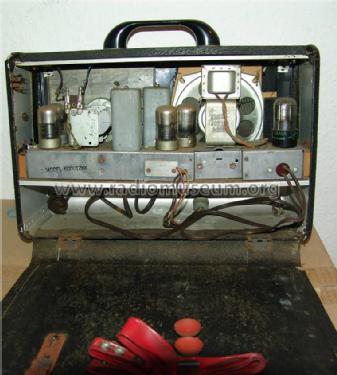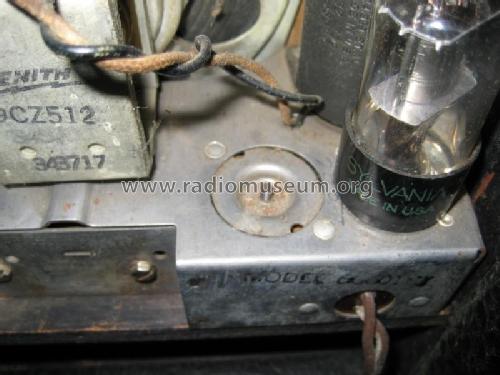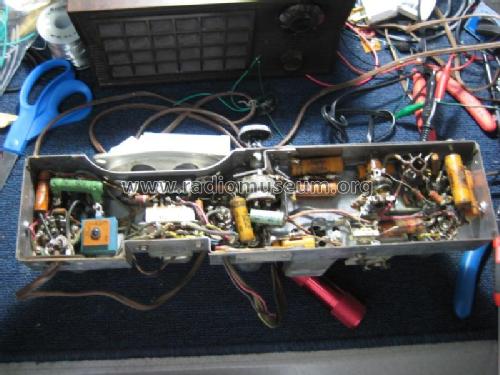6G001ZYX Universal
Zenith Radio Corp.; Chicago, IL
- País
- Estados Unidos
- Fabricante / Marca
- Zenith Radio Corp.; Chicago, IL
- Año
- 1947 ?
- Categoría
- Radio - o Sintonizador pasado WW2
- Radiomuseum.org ID
- 241915
-
- alternative name: Chicago Radio Lab
- Numero de valvulas
- 6
- Numero de transistores
- Semiconductores
- Selenium-Rectifier
- Principio principal
- Superheterodino con paso previo de RF; ZF/IF 455 kHz
- Gama de ondas
- OM (onda media) solamente
- Tensión de funcionamiento
- Red / Baterías o pilas
- Altavoz
- Altavoz dinámico (de imán permanente)
- Material
- Metálico
- de Radiomuseum.org
- Modelo: 6G001ZYX Universal - Zenith Radio Corp.; Chicago,
- Forma
- Portátil > 20 cm (sin la necesidad de una red)
- Anotaciones
-
Rectifier tube replaced by selenium rectifier.
Attention:
This 6G001ZYX is different from the 6G001YZX. How far they are common is not (yet) known.
- Autor
- Modelo creado por Konrad Birkner † 12.08.2014. Ver en "Modificar Ficha" los participantes posteriores.
- Otros modelos
-
Donde encontrará 4491 modelos, 4096 con imágenes y 3603 con esquemas.
Ir al listado general de Zenith Radio Corp.; Chicago, IL
Colecciones
El modelo 6G001ZYX Universal es parte de las colecciones de los siguientes miembros.
Contribuciones en el Foro acerca de este modelo: Zenith Radio Corp.;: 6G001ZYX Universal
Hilos: 1 | Mensajes: 5
Hello Radio Friends,
While going over the chassis of my 6G001YZX this weekend, I noticed something immediately; the lack of a 117Z6 rectifier tube and in its place is a selenium rectifier (SR). The tube socket is replaced with a metal plate, which appears to be factory work, and the SR is bolted to the underside of this plate. The SR is connected to a wire-wound 3 or 5 watt resistor (that is well cooked and the ceramic is broken, but the wire is not) which is connected to the 40 mfd electrolytic (7A). Since the resistor no longer bears any markings, I tested it around 155 ohms. That seems low to me, but I decided to stay in that vicinity and replaced the resistor with a 240 ohm 7 watt resistor. It immediately came back to life, with only the slightest hum (I have changed nothing else, yet), and a small bit of squealing when I adjust the volume (presumably from the SR). After 5 or 6 minutes, the new resistor was still cool enough to touch with my finger.
Is anyone familiar with this set and possibly know if this was something common for Zenith to do by 1946? I did not think selenium rectifiers were widely used on the 1950s?
Any other feedback from the far-more-experienced-group-than-I is also appreciated.
Bob
Bob Isaac, 19.Apr.10




